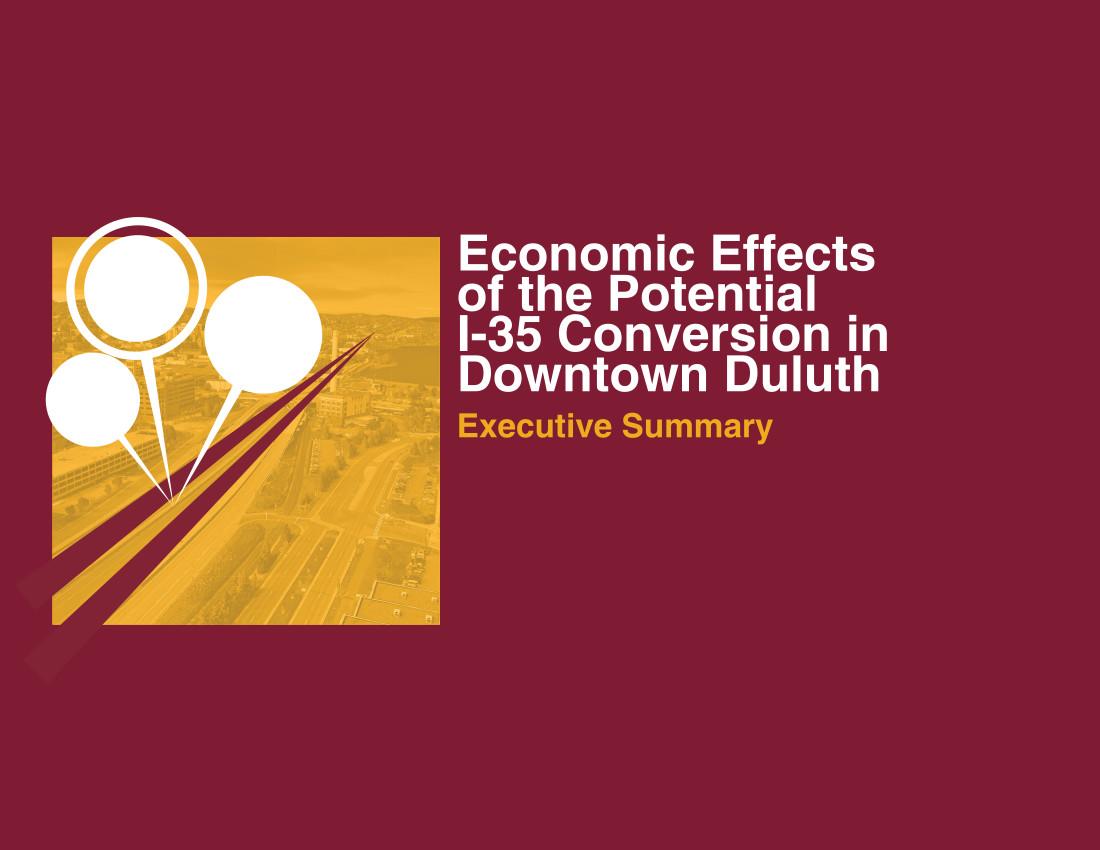Talk in the community about a possible redesign of I-35 through downtown Duluth prompted the Bureau of Business and Economic Research (BBER) and the U of M Extension’s Center for Community Vitality to conduct a study on the potential economic impact if the redesign were to happen.
With private investment on the reclaimed land and impact from the construction project alone, Duluth could see a large infusion of economic activity.
LSBE students Erin Hopkins, Kenny Nadeau, and D'Lanie Perry's research, analysis, and writing skills were instrumental in the project.
The BBER hires UMD students as undergraduate research assistants. These students are trained in applied economics research and gain in-depth hands-on experience working on actual BBER projects. Several BBER students have gone on to graduate school or law school, and many others have pursued careers in research-based fields.
The BBER's study of the possible I-35 redesign used case studies from similar rightsizing projects, interviews and survey results from stakeholders and subject matter experts, information on rightsizing projects across the U.S., and insight gathered from over 360 people who stopped at the BBER's table during the downtown Duluth’s Sidewalk Days.
"Working on the I-35 study was a great opportunity to see a project through from start to finish," said Hopkins, a senior with a triple major of Economics, Mathematics, and Statistics and Actuarial Science. "I learned the beginning process of a project and about client communication. During the project, I focused on the case studies section, where I experienced the full report compilation; I researched, wrote, and went through the editing process. This all helped improve my skills."
"My favorite part of the I-35 project was being able to look at the various case studies and see how those cities have performed since their roadway completions," said Nadeau, a senior with a double major in Economics and Management. "Quantifying the cities' changes in total businesses, sales volumes, greenspace, etc. was fascinating and leads me to believe the same positive impacts can be seen in Duluth!
"Working at the BBER has introduced me to professional research work and lets me apply my classroom knowledge to real-world projects," added Nadeau. "The BBER projects require me to analyze quantitative data and communicate results effectively, making me a more versatile and valuable asset for my post-college career."
A visual summary of the I-35 report is available as well as the full report, which can be viewed on the U of M's Digital Conservancy website along with all of the BBER's reports.
